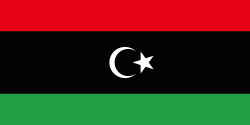Jabal al Akhdar (Al Jabal al Akhḑar)
Per the census of 2012, the total population in the region was 157,747 with 150,353 Libyans. The average size of the household in the country was 6.9, while the average household size of non-Libyans being 3.7. There were totally 22,713 households in the district, with 20,907 Libyan ones. The population density of the district was 1.86 persons per km2. Per 2006 census, there were totally 70,321 economically active people in the district.
Per the census of 2012, the total population in the region was 157,747 with 150,353 Libyans. The average size of the household in the country was 6.9, while the average household size of non-Libyans being 3.7. There were totally 22,713 households in the district, with 20,907 Libyan ones. The population density of the district was 1.86 persons per km2. Per 2006 census, there were totally 70,321 economically active people in the district. There were 44,972 government employees, 6,436 employers, 26,710 first level workers and 069 second level workers. There were 18,290 workers in state administration, 2,749 in agriculture, animal husbandry and forestry, 3,148 in agriculture & hunting, 22,772 in education, 4,954 in private enterprises, 3,319 in health & social work, 4,465 in production, 22,846 in technical work and 1,341 service workers. The total enrollment in schools was 71,229 and the number of people above secondary stage and less than graduation was 3,628. As per the report from World Health Organization (WHO), there were two communicable disease centres, 7 dental clinics, three general clinics, 0 in-patient clinics, 16 out-patient clinics, 55 pharmacies, 157 PHC centres, one polyclinics, 6 rural clinics and no specialized clinics. Islam is the state and major religion of the country.
Map - Jabal al Akhdar (Al Jabal al Akhḑar)
Map
Country - Libya
 |
 |
| Flag of Libya | |
Libya has been inhabited by Berbers since the late Bronze Age as descendants from Iberomaurusian and Capsian cultures. In classical antiquity, the Phoenicians established city-states and trading posts in western Libya, while several Greek cities were established in the East. Parts of Libya were variously ruled by Carthaginians, Persians, and Greeks before the entire region becoming a part of the Roman Empire. Libya was an early center of Christianity. After the fall of the Western Roman Empire, the area of Libya was mostly occupied by the Vandals until the 7th century when invasions brought Islam to the region. In the 16th century, the Spanish Empire and the Knights of St John occupied Tripoli until Ottoman rule began in 1551. Libya was involved in the Barbary Wars of the 18th and 19th centuries. Ottoman rule continued until the Italo-Turkish War, which resulted in the Italian occupation of Libya and the establishment of two colonies, Italian Tripolitania and Italian Cyrenaica (1911–1934), later unified in the Italian Libya colony from 1934 to 1943.
Currency / Language
| ISO | Currency | Symbol | Significant figures |
|---|---|---|---|
| LYD | Libyan dinar | لد | 3 |
| ISO | Language |
|---|---|
| AR | Arabic language |
| EN | English language |
| IT | Italian language |















